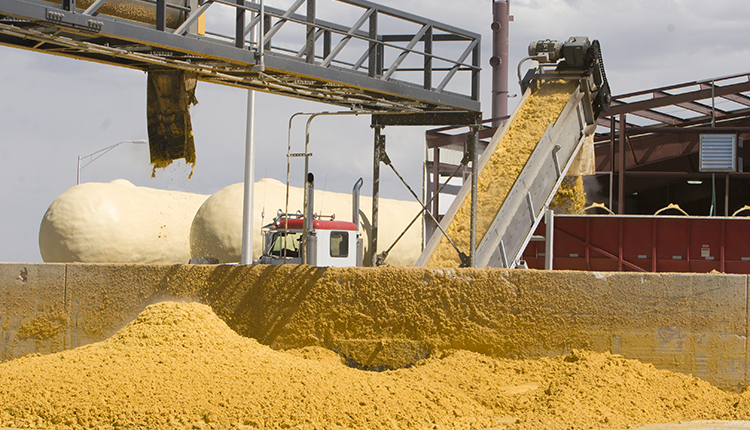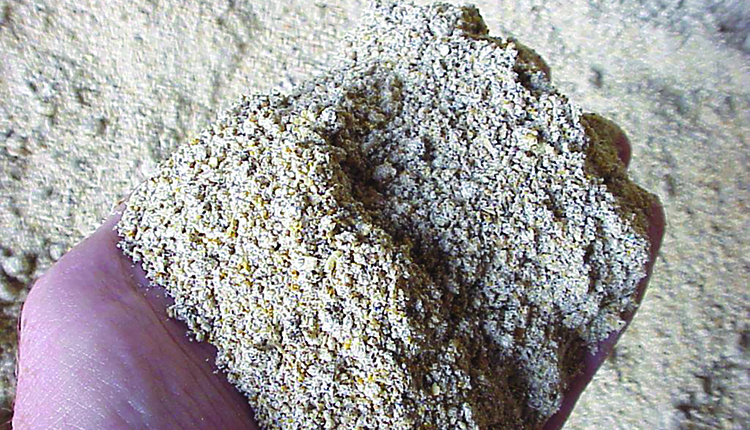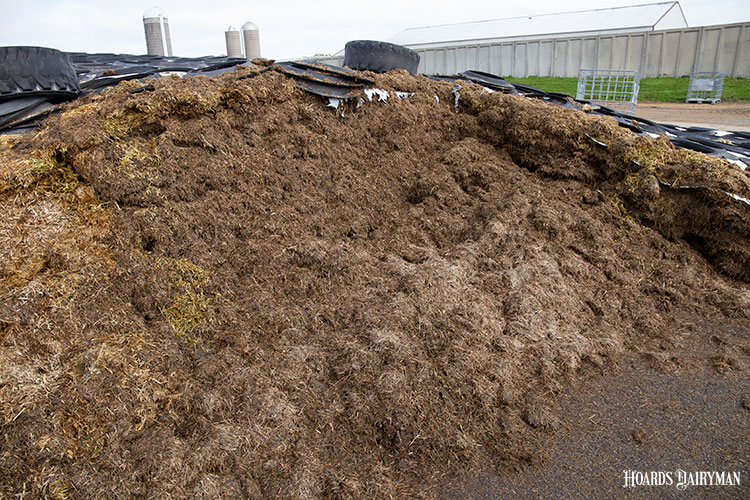
Hay crop silage making is finished for this year for many dairymen. Typically, it would be months before thoughts turn to ensiling the spring hay crop. However, now may be a good time to contemplate strategy for the upcoming ensiling season.
The feed industry emphasizes the value of neutral detergent fiber (NDF) digestibility in characterizing forage quality and in structuring diets for milking groups. When considering corn silage, there is some emphasis on genetics and how that influences fiber digestibility. It is well-recognized that weather conditions, moisture levels, and heat increment influence forage quality and NDF digestibility. These are factors generally outside of the control of the person growing the forage crop. What is not as often considered is that ensiling management has a significant bearing on NDF digestibility from the cow’s perspective.
A key objective in making silage is to eliminate oxygen from the silage mass as quickly and completely as possible. The presence of oxygen leads to a reaction that creates heat. In general, the heating of silage during the ensiling process degrades the quality of the silage and the availability of nutrients. This occurs as the heating creates chemical linkages that are resistant to enzymatic attack.
A typical forage analysis includes a measure of heat-damaged protein which is a key marker for the degree of heating that occurred during ensiling. This value may be reported as “ADF (acid detergent fiber) Protein” or “ADICP” (acid detergent insoluble crude protein). It may be reported as “% of dry matter” or as “% of crude protein.”
It is well understood that heating during ensiling damages protein and binds protein in a manner that it becomes much less available to the cow. What is not as recognized is that this same process impacts the ability of the rumen to degrade fiber. This impact is significant.
A review of Cumberland Valley Analytical Services (CVAS) data for mixed and grass hay silages shows that for every 2% increase in the ADICP (as a % of CP) there is more than a 1% reduction in NDF 30-hour in vitro digestibility. The impact of heat damage on NDF digestibility is economically more significant than the impact on protein availability.
Below is a graph of the relationship between acid detergent insoluble crude protein and NDF 30-hour in vitro digestibility. The R2 statistical analysis is 46%, which may not appear high. Recognize that this impact of heat damage is one of many factors that is related to NDF digestibility, such as species and growing conditions.
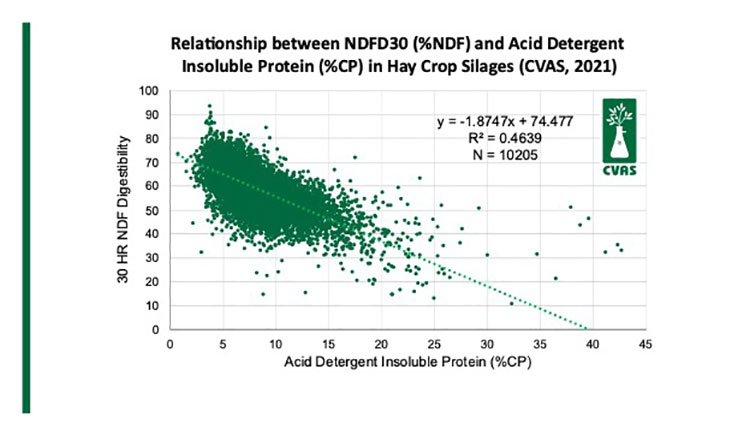
It is important to understand what a “typical” ADICP value is in order is to have a benchmark to compare to. Below is a distribution graph that provides an understanding of the range of ADFCP in hay crop silage.
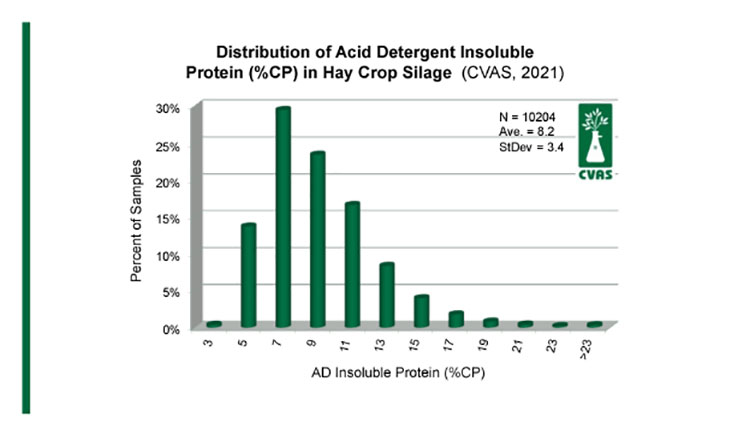
Forage ensiling is one of the critical processes on the dairy. If it is not performed well, there is the potential for significant economic impact. Fiber digestibility (NDF), which is a driver of rumen function, is negatively impacted by heating that may occur during the ensiling process.
Work with your nutritional and forage advisors to develop objectives for ensiling that reduce the potential for adverse heating. Key factors that influence this include moisture, length of cut, and filling in a manner to create high silage density. Planning now will allow for execution when spring harvest once again rolls around!







